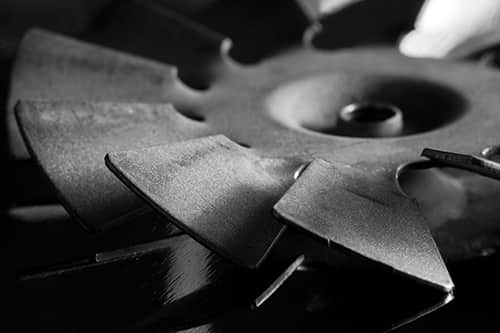Intro
If you’re in the market for a fabricated part that uses steel, there are a few things you need to understand. For starters, there are different types of steels, and they’re very different from one another. In this guide, we’ll explain the different types of steel, why they matter, and give you professional advice when it comes to designing a steel part.
What Is Steel?
From a material selection standpoint, steel is an option to use when you need a strong part and you don’t want to pay too much for it. It’s generally more expensive than aluminum, but not nearly as expensive as titanium and comparable super-strong metals.
It’s also more dense which means the final assembly will be heavier.
The Types of Steel
At its core, steel is the combination of carbon and iron. The amount of carbon added will make the resulting steel fall into one of three types: low, medium, or high.
If the metal has less than 0.30%, it’s low. Between 0.30% and 0.50% is medium, and anything over 0.60% is considered high carbon.
In the machine shop, there are generally only two steels to choose from: carbon steel or stainless steel. If it falls into low, medium, or high carbon as we just explained, it’s considered carbon steel.
Stainless Steel
Stainless steel is the stronger, more versatile older brother to carbon steel. It also contains carbon, but it has a lot of chromium included as well. The chromium content can be around 11%, and its main purpose is to make the raw material more corrosion resistant.
In addition, there will be a small amount of nickel added to stainless steel. This boosts the tensile strength and power of the metal, making it much stronger than standard carbon steel.
The addition of these elements also makes stainless steel good at handling heat, allowing it to work well in aerospace and defense applications.
In a previous post, we discussed the different grades of aluminum and how they work — the same concept is at play with stainless steels. The difference is that steel only uses a three-digit identifier, like “304”.
This is because a stainless steel can be part of five different families of steel: duplex, austenitic, precipitation hardening, ferritic, and martensitic. With the three-digit code, you can understand which type of stainless you’re working with.
Tool Steel
An alternate style of steel is used in applications like injection molding, stamping, die-casting, and cutting. It’s called tool steel, and it’s defined by how hard the metal is.
These steels are still strong, corrosion-resistant, and wear-resistant, but they’re very good at preventing cyclic failure. When you use tool steel in injection molding, you can easily make over 500,000 units with the steel tool until it fatigues and needs to be replaced.
Using a standard stainless for the same operation won’t give you the same longevity.
Design Considerations for Steel
Steel doesn’t machine the same as other metals, and different types of steels require different considerations as well. Compared to aluminum (another common metal choice in a fab shop), steel is more difficult to work with. Machines need to run at higher speeds and move across the part slower.
Since we’ll be handling the actual machining, you’ll just need to consider which steel you want to use and some choices for your design.
If you’re planning on welding the steel, you need to make sure that every other part you design (that will be welded together) is also steel. We can only weld two materials when they’re both the same.
In general, stainless steel is preferred if you want to avoid finishing steps and maximize the strength of the part.
Some of our customers will design a part out of carbon steel, then put it through a powder coating phase. The powder coating makes the part corrosion-resistant just like stainless steel, but carbon steel is less expensive and easier to work with.
Any steel option can get polished to a nice sheen and go through further finishing steps to change the surface and aesthetics of the part. The key difference is that stainless steel parts are more expensive since they take longer to machine and cost more for the raw material.
When you’re making a steel part, you should understand that internal corners and cut features often can’t be exactly 90 degrees and square. If you have a machined pocket, there will naturally be rounded edges and no sharp corners. That’s because a CNC milling machine uses a rounded cutting bit, so the corners are always rounded.
Conclusion
Now you know all about different types of steels and how they work. If you want to use steel for an upcoming project, reach out to our team at Rapid Axis. We can help you pick the right option, and we can handle all of your CNC machining and fabrication needs. You can get a free quote today to get your part even sooner.

